Applying The Neuroscience of Pain to Influence Consumer Psychology
The careers of athletes are often defined by their mistakes. In the summer of 2002, Spanish goalkeeper Santiago Cañizares committed the mother of all career-defining errors.
This was no pivotal bad pass, poor save, or tactical error. But a stroke of bad luck… in the bathroom.
On the morning of May 18th, 2002, he dropped his aftershave. It crashed on his sink, and a large shard of glass dug into his left foot, severing a major tendon. Just weeks before the 2002 World Cup in Korea and Japan, the star goalkeeper was withdrawn from the squad. Instead of competing at the most prestigious international tournament in all of sports, he was forced to spectate in agony from his couch in Madrid.
All from dropping an aftershave bottle. One can only imagine the thoughts going through Santiago’s head as he came to realize the extent of the gashed tendon. There must have been the physical pain of the injury itself, but much more aversive was the creeping understanding of what this pain represented.
This speaks to the neuroscience of pain itself—what part is pure biology, and what part is what we believe about the pain. As we’ll see, the science of pain is much more subjective than we realize. And because of this subjectivity, pain can be a potent tool in marketing and consumer decision-making.
To understand how pain intersects with consumer psychology, we need to dive into the science of pain.
The Neuroscience of Pain
Let’s start with simple biology. The general pathway is relatively straightforward: External tissue damage that starts at the body’s surface stimulates pain receptors, which then travel up through the spine, and into the brain through the thalamus (the part that relays sensory information to the cortex). However, this is just the beginning. The actual pain experience we experience is only partially determined by what’s being sent to the brain.
Consider, for example, the role of surprise. Unlike your unexpectedly early Amazon delivery, it’s no fun to be surprised by pain. This is why doctors and dentists will generally tell you “this is gonna hurt a bit” right before you get pricked by the needle. It still doesn’t feel great at the moment, but studies have found that compared to the pain being a surprise, the expectation of pain can decrease it by about 50 percent. (Thanks, Doc!)
As discussed in Blindsight, the placebo effect has a massive impact on our consumer experiences. Merely believing we’re drinking a soda from a strong brand (e.g. Coke), leads us to enjoy the flavor much more. If you slap a Nike logo onto a generic driver, you’ll hit the ball further than from one without.
These functional brand effects also impact pain perception. If someone has a headache and you hand them a generic painkiller, lie to them and tell them it’s Tylenol. People have come to believe that Tylenol products are more effective than their generic counterparts, even if the underlying chemistry is nearly identical. Studies have found that this brand belief makes a massive difference: merely believing you’re popping a Tylenol pill, compared to a generic pill, makes the headache go away faster.
The impact of belief on pain goes both ways. Just as there’s a placebo effect, there’s also a “nocebo effect”. In one study, researchers put fake electrodes on people’s heads and pretended to send them electric shocks. Despite no actual electricity being conducted, people reported feeling real pain!
The Mechanisms of Pain Framing
Beliefs have a massive impact on pain, and especially for beliefs about the source of the pain. In one study, participants hooked up to electrodes were given mild electric shocks on their fingers, and were tasked to evaluate how painful each shock was. They were led to believe the shocks were either delivered intentionally by an experimenter or unintentionally unbeknownst to them.
When they believed the shocks were intentional, they perceived them to be much more painful. If someone drops aftershave on your foot on purpose, it actually feels more painful than if someone did it by accident.
Along similar lines, pain is also heavily influenced by the contextual occurrences. If you’re in the gym doing an intensive workout, you’re likely feeling a high degree of pain: sweat in your eyes, muscles strained, chest burning. In this instance, these painful sensations aren’t experienced as such; and in fact, many find them enjoyable. They’re indications that we’re having a good work out. After all, “no pain no gain”.
But imagine having that same sensation in your body on a regular Tuesday afternoon while you’re walking your dog. Now, this is experienced as extreme discomfort. Despite the sensations in the body being exactly the same, the actual experience of it is completely different. All that’s changed is the context.
How to Frame Pain and Influence Consumer Psychology
With the exception of dental practices, most companies aren’t in the business of delivering actual pain. As we’ve seen, pain is incredibly subjective, and it doesn’t have to be ‘real’ for it to influence us. In this way, marketers don’t have to deliver pain for it to impact your behavior; the mere idea of pain can be enough to influence our consumer decisions.
Pain becomes a persuasive tool in tandem with the negativity bias. We’re more sensitive to possibly hurtful things than possibly pleasurable things. In behavioral science, this means that we’re generally loss averse. studies after studies have illustrated we’re more motivated NOT to lose $20 than we are to gain $20. Pain is more powerful than pleasure.
Enter the world of loss framing. There are many different ways to describe the same product features, which can make or break consumer decision-making. Take multi-vitamins for example. You could hype up the fact that the vitamins will give them a longer life, more energy, and greater vitality. This is a Gain Frame. But you could also focus on the fact that the vitamins will protect them from aging, low energy, and growing weak. This is a Loss Frame. Because we’re generally loss averse, we’re more sensitive to loss frames. We want to keep and protect what we already have.
While the majority of products can be framed either way, certain industries like insurance banks on the loss frame. It’s no wonder that marketing campaigns in the insurance industry are a constant barrage of loss frames. From AllState’s Mayhem series to StateFarm coming to Chris Paul’s rescue, the use of potential pain is industry-wide.
All in all, pain is a powerful force. This is as true for everyday life, as it is for consumer psychology. it’s much more subjective than we realize. Our tendency to be loss averse makes the experience of pain especially motivating too. As we’ve seen, even the mere idea of pain leads us to think more deliberately, buy insurance, and be more cautious.
So how did the Spanish National Team cope without their star keeper? They replaced him with none other than Iker Casillas. Thrust into the spotlight at an early age, he thrived under the pressure and became the greatest goalkeeper in the nation’s history, leading Spain back-to-back European Cups, along with its first-ever World Cup trophy in 2010.
Sadly, Cañizares never played in another major league. Fans of the Spanish National Team may find deeper meaning in the pain from his severed tendon. And for all of us, his story may provide the ultimate loss frame of all: “Always be careful with the aftershave”.
Photo by @felipepelaquim via UnSplash
About the author
Matt Johnson, PhD is a researcher, writer, and consumer neuroscientist focusing on the application of psychology to branding. He is the author of the best-selling consumer psychology book Blindsight, and Branding That Means Business (Economist Books, Fall 2022). Contact Matt for speaking engagements, opportunities to collaborate, or just to say hello
References for The Application of Pain to Marketing and Consumer Psychology
American Chronic Pain Association, “Neuropathic Pain,” www.theacpa.org/condition/neuropathic-pain.
Bastian, B., Jetten, J., & Ferris, L. J. (2014). Pain as Social Glue: Shared Pain Increases Cooperation. Psychological Science, 25(11), 2079–2085. https://doi.org/10.1177/0956797614545886
BBC Sport. “Canizares out of World Cup". 17 May 2002, BBC http://news.bbc.co.uk/sport3/worldcup2002/hi/team_pages/spain/newsid_1994000/1994707.stm
Davidson, J. R. et al. (2004) “Fluoxetine, Comprehensive Cognitive Behavioral Therapy, and Placebo in Generalized Social Phobia,” Archives of General Psychiatry 61 (2004): 1005.
Gray, K., & Wegner, D. M. (2008). The Sting of Intentional Pain. Psychological Science, 19(12), 1260–1262. https://doi.org/10.1111/j.1467-9280.2008.02208.x
Kirsch, I. et al. (2008) “Initial Severity and Antidepressant Benefits: A Meta-analysis of Data Submitted to the Food and Drug Administration,” PLOS Medicine 5 (2008): e45. 10. I.
Kirsch, I. (2008) “Challenging Received Wisdom: Antidepressants and the Placebo Effect,” McGill Journal of Medicine 11: 219–22;
Purves, D. et al., (2001) “Central Pain Pathways: The Spinothalamic Tract,” in Neuroscience (Sunderland, MA: Sinauer Associates, 2001), at www.ncbi.nlm.nih.gov/books/NBK10967/.
Schweiger, A. and Parducci, A. (1981) “Nocebo: The Psychologic Induction of Pain,” Pavlovian Journal of Biological Science 16: 140–43.
Watkinson, P., Wood, A. M., Lloyd, D., & Brown, G. D. A. (2013). Pain ratings reflect cognitive context: A range frequency model of pain. Pain, 154, 743-749.
Williams, C. M. et al. (2014) “Efficacy of Paracetamol for Acute Low-Back Pain: A Double-Blind, Randomised Controlled Trial,” Lancet 384 (2014): 1586–96. 9.


